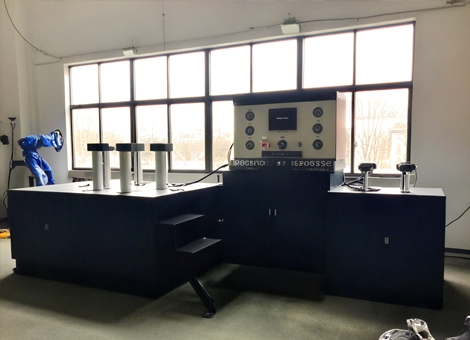Aug 15, 2025
Hydraulic valve test rigs are key equipment in any facility for validation, maintenance or quality control of pressure-related products. From routine valve testing to detailed pressure performance assessments, this equipment is responsible for ensuring accuracy, safety and efficiency. However, keeping these test rigs running smoothly is more than just changing the hydraulic fluid. To ensure long-term performance of the test rig and reduce disruptions, a comprehensive maintenance strategy must be developed based on the test rig's operating environment and intensity of use.
Whether you are using a general-purpose hydraulic valve test rig or a dedicated safety valve test rig, structured maintenance can prevent wear, ensure operator safety and reduce testing delays caused by preventable equipment issues.
Understanding the Requirements of Hydraulic Valve Test Rigs
These systems need to withstand regular pressure cycles, high loads and frequent adjustments depending on the type of valve being tested. Safety valve test rigs in particular need to perform precise operations to verify that the valve can open and reseal at the target pressure. These tasks must be performed continuously and repeatably, which places high demands on both hydraulic and mechanical components.
Because test rigs are typically in operation for long periods of time, components such as seals, connectors and pressure sensors are susceptible to wear that may not be immediately apparent. If preventative measures aren’t taken, minor performance degradation can develop into a failure that interrupts workflow or affects test accuracy.
Keeping Fluid Clean Isn’t Enough
Changing hydraulic fluid is one step in test bench maintenance, but keeping fluid clean is more than just regular topping up. Over time, contaminants such as water vapor, metal shavings or deteriorated seal materials can enter the system, affecting performance or causing internal wear. These issues can go unnoticed if fluid is simply changed without checking filters and fluid clarity.
To maintain fluid health, always combine fluid changes with filtration checks, reservoir checks and moisture control. Drain valves and reservoirs should be cleaned regularly to prevent fouling. Monitoring oil color and consistency can also provide early warning of internal degradation or component failure.
Pressure Component Management and Calibration
Pressure gauges, relief valves and sensors play a central role in providing accurate readings and safe operation. Whether on a hydraulic valve test bench or a safety valve test bench, pressure measurements must remain stable and calibrated over time. Pressure gauge drift can lead to under- or over-testing, affecting results and compromising operator safety.
Developing a calibration schedule using certified instrumentation can help verify that pressure components are maintained within acceptable limits. Digital sensors should not only be checked for calibration, but also for connection integrity and speed of response. Mechanical components such as spring-loaded valves may need to be tested more frequently and replaced occasionally depending on their life cycle.

Seals and Hoses: Small Parts, Big Impact
Some of the most common causes of hydraulic system failure involve seals and hoses. Despite their small size, these components can directly impact the test stand’s ability to build and maintain pressure. Leaking seals can result in loss of hydraulic fluid, pressure drops, or unsafe operation.
For facilities operating safety valve test stands, high-pressure relief is part of daily operations, so seal quality is particularly important. Regular visual inspections, combined with tactile inspections for hardness or brittleness, can help identify parts that need replacement before they fail. Keeping spare seal kits and hoses nearby can reduce downtime when parts need to be replaced during operation.
Electrical and Control System Maintenance
A Hydraulic Valve Test Bench often includes a mix of analog and digital control elements. These components, while not exposed to hydraulic pressure directly, are sensitive to environmental conditions such as temperature, humidity, and vibration.
Control panels should be cleaned with non-corrosive agents, and all connections checked for tightness and corrosion. Switches, relays, and touchscreens should be tested periodically for correct operation. For systems using software-based interfaces or test data storage, backups and firmware updates should be included in the maintenance cycle.
A failure in the control system can interrupt testing just as easily as a fluid leak or mechanical fault, so regular review of electrical components is just as necessary as mechanical maintenance.
Operator Routines and Training
Even the most well-maintained test bench can fall short if operators are unfamiliar with usage procedures or unaware of early signs of malfunction. Developing clear daily checklists and providing regular refresher training sessions can reduce misuse and ensure that minor issues are reported promptly.
Operators can be trained to look for early signs such as inconsistent pressure buildup, delayed valve responses, or unexplained fluid consumption. When reported early, these signs can lead to quicker diagnostics and prevent more significant failures.
Documenting maintenance activities and observed issues can also help identify long-term trends, making it easier to plan part replacements and reduce unplanned service interruptions.